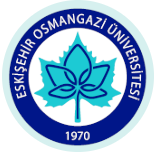Electronic Components and Systems (ECS) Community Strategic Research and Innovation Agenda (SRIA)
Electronic Components and Systems (ECS) Community Strategic Research and Innovation Agenda (SRIA) describes the Major Challenges, and the necessary R&D&I efforts to tackle them, in micro- and nanoelectronics for smart systems integration all the way up to embedded and cyber physical systems, and System of Systems. Aspects of photonics, quantum technologies, flexible and hybrid electronics integration are now also covered by this document to open up new opportunities in Europe. This SRIA is intended to be funding programme agnostic and can be used as a basis for the various cooperative programmes across Europe.
Dr. Uğur YAYAN contributes to the preparation of the QUALITY, RELIABILITY, SAFETY AND CYBERSECURITY subsection in the "Electronic Components and Systems (ECS) Community Strategic Research and Innovation Agenda (SRIA) 2022 and 2021" roadmap. In SRLAB, we are conducting our research according to strategic roadmaps. You can find detailed information and document here.
Networked European Software and Services Initiative (NESSI) Strategic Research and Innovation Agenda (SRIA)
NESSI is the Horizon 2020 European Technology Platform (ETP) dedicated to software, services and data. The domains covered by the ETP act as catalysers for the digital revolution that is deeply transforming Europe, and have huge impacts on the way people work, communicate, organize or entertain themselves. Capitalizing on previous documents produced by NESSI, this Strategic Research and Innovation Agenda sets the scene for the remainder of H2020 and proposes a systematic review of the technological challenges to be addressed to build digital systems that need to be distributed and ubiquitous, trusted and sustainable and exhibit new levels of intelligence. These challenges apply to the infrastructures, the software technologies, and to data and knowledge, and represent new opportunities for innovative services transforming all sectors and introducing new business models. As software is now the sole key enabling technology transversal to all technical innovations, being embedded in solutions and services or providing smart tools for other domains, it should be promoted by Research and Innovation instruments that recognize its unique nature. Software is not only a ‘game changer’ in transforming and digitizing industry and society, it is also the friendly ‘ghost in the machine that cares’ for human needs. Targeting a true Software Continuum will require dedicated programmes, new cross-cutting initiatives, sectorial innovation and new cooperation with various domains from social sciences to education.
You can find detailed information and document here.
Systems Engineering Vision 2035
The Systems Engineering Vision 2035 is intended to inspire and guide the strategic direction of systems engineering for the global systems community. This community includes leaders of organizations, practitioners, and students, and others serving this community that includes educators, researchers, professional organizations, standards bodies, and tool vendors. It is intended to apply to a broad range of application domains including biomedical, defense, healthcare, power and energy, telecommunications, transportation, and many others.
This vision can be used to develop strategies to evolve the systems engineering capability of an enterprise or project. The vision can also be used to help direct investments and support collaborative efforts to advance the discipline and grow the skill base to meet current and future challenges related to systems development. The reader will also gain insights on trends that impact enterprise competitiveness and how systems engineering will respond to these trends, which include the digital transformation, sustainability, smart systems and complexity growth, and advancements in modeling, simulation, and visualization.
You can find detailed information and document here.

